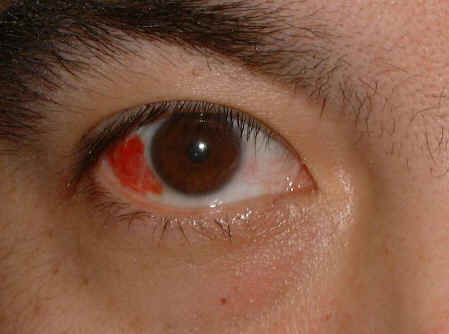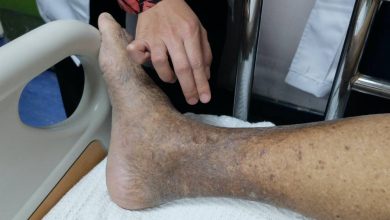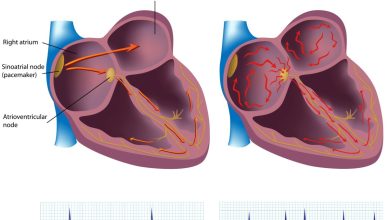Subconjunctival Hemorrhage Causes, Symptoms, Diagnosis and Treatment

What Is Subconjunctival Hemorrhage?
Subconjunctival hemorrhage, also known as subconjunctival haemorrhage and hyposphagma, is bleeding underneath the conjunctiva.
The conjunctiva contains many small, fragile blood vessels that are easily ruptured or broken. When this happens, blood leaks into the space between the conjunctiva and sclera.
Whereas a bruise typically appears black or blue underneath the skin, a subconjunctival hemorrhage initially appears bright-red underneath the transparent conjunctiva.
Later, the hemorrhage may spread and become green or yellow, like a bruise. Usually this disappears within 2 weeks.
Although one may feel self-conscious about the appearance of their eye, health complications from a subconjunctival hemorrhage are rare.
Causes Of Subconjunctival Hemorrhage:
Subconjunctival hemorrhage can be caused by:
- Mask squeeze from diving and not equalizing mask pressure during descent
- Eye trauma
- Coagulation disorder (congenital or acquired)
- Head injury
- Whooping cough or other extreme sneezing or coughing
- Severe hypertension
- LASIK
- Acute hemorrhagic conjunctivitis (caused by Enterovirus 70 or Coxsackie A virus)
- Leptospirosis
- Increased venous pressure (e.g., extreme g-force, straining, vomiting,choking, or coughing)
Risk Factors For Subconjunctival Hemorrhage Include:
- Diabetes
- Certain blood-thinning medications, such as warfarin (Coumadin) and aspirin
- Blood-clotting disorders
Symptoms Of Subconjunctival Hemorrhage:
Most of the time, no symptoms are associated with a subconjunctival hemorrhage other than seeing blood over the white part of the eye.
- Very rarely people experience pain when the hemorrhage begins
- As the hemorrhage resolves, some people may experience very mild irritation of the eye or merely a sense of awareness of the eye.
- The hemorrhage itself is an obvious, sharply outlined bright red area overlying the sclera. The entire white part of the eye may occasionally be covered by blood.
- In a spontaneous subconjunctival hemorrhage, no blood will exit from the eye.
- The hemorrhage will appear larger within the first 24 hours after its onset and then will slowly decrease in size as the blood is absorbed.
Diagnosis Of Subconjunctival Hemorrhage:
Subconjunctival hemorrhage can be diagnosed via
- Physical exam
- Blood pressure test
Treatment Of Subconjunctival Hemorrhage:
Usually, no treatment is required.
Eye drops, such as artificial tears, may be used in order to soothe any scratchy feeling in the eye.
There’s no known way to prevent subconjunctival hemorrhage unless there is a clearly identifiable cause for the bleeding.
By : Natural Health News




